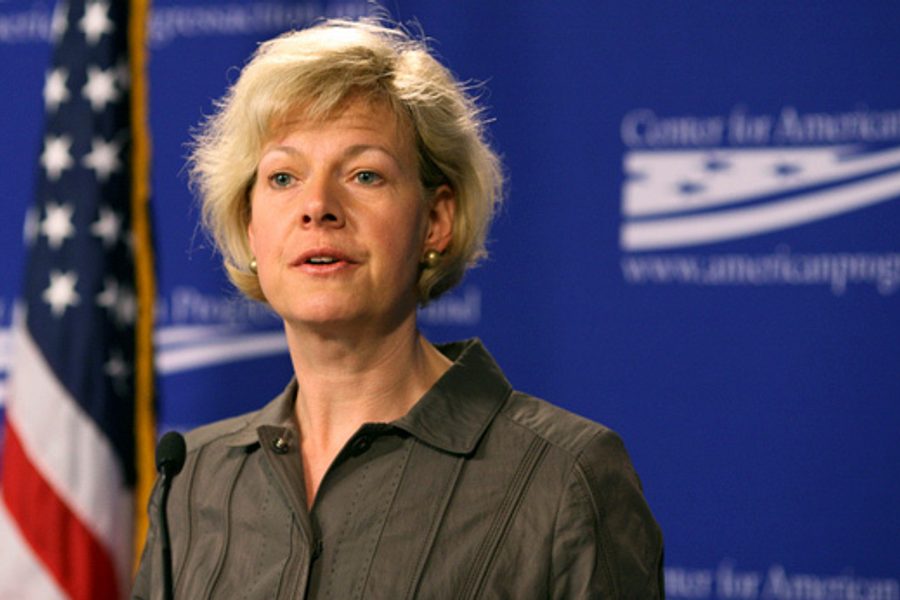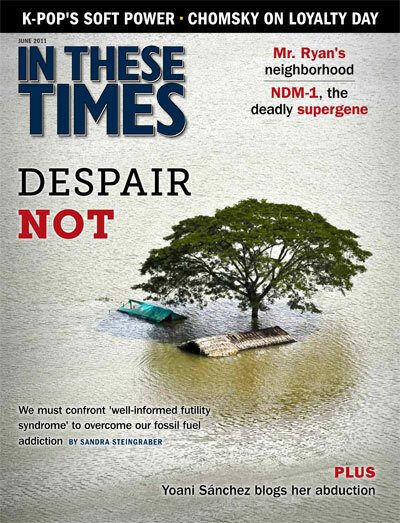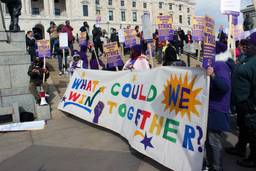Mr. Ryan’s Neighborhood
The House budget chairman’s plan takes from the poor and gives to the rich.
Roger Bybee

House Budget Chairman Paul Ryan’s (R-Wis.) star is rising fast, as Beltway pundits describe his plan to cut $6.2 trillion in federal spending over 10 years as a “courageous” and “thoughtful” strategy to hold down spending on “entitlements.”
But in contrast to his climb to prominence, Ryan’s district – like many across the United States – continues to decline and shows few signs of economic recovery. To understand the implications of Ryan’s proposed “Path to Prosperity” budget, which passed the House in April, let’s examine whether it would help his own constituents.
The 1st Congressional District in southeastern Wisconsin is in dire straits. Prolonged unemployment – 14.1 percent in Racine – has exacted a painful toll on family and community life. The region has been plagued by plant shutdowns and relocations, like the 3,800-worker Delphi plant closing in Oak Creek and the 1,800 workers who lost their jobs when General Motors shut its Janesville plant in 2008. Child poverty has risen sharply in recent years. In Ryan’s hometown of Janesville, 50 percent of school children are eligible for free or reduced-cost lunches. Similarly, the HealthNet free clinic in Janesville has faced a 77-percent jump in the number of people seeking healthcare between 2008 and 2010. Most tragically, Janesville has experienced a near-doubling in suicides over the past two years. “We were seeing a lot of them who had just lost their jobs or were unemployed and couldn’t find work,” coroner Jenifer Keach told the Janesville Gazette in March. “For a lot of people, right now, financial pressure is just huge.”
With his district in need of new family-supporting jobs and social services, Ryan claims that his budget plan will unleash economic growth – although nearly two-thirds of the cuts would fall on poor families, according to the Center on Budget and Policy Priorities (CBPP).
So how does Ryan’s bill promise to turn around the crises facing his district? For the 1st District’s nearly 33,000 jobless workers, Ryan claims to be an advocate of “life-long learning” to help people adapt to the jobs of the future. But his “Path to Prosperity” would cut funding for job-training programs around the country.
“The cuts he is proposing would have a devastating effect on the hardest-hit workers in Wisconsin, with cities like Racine and Beloit way above the national average in unemployment,” says Robert Borremans, executive director of the Southwest Wisconsin Workforce Development Board. “The cuts would mean that displaced workers would be shut out of new opportunities.”
Ryan is also pushing for cuts to Pell Grants for education, which the CBPP considers one of the most effective ways to help low-income students enter the middle class. Funding for Head Start, the program for poor pre-school children, would be reduced by the equivalent of 218,000 pupils under his plan.
Lack of healthcare is also a problem in the district, as employers have reduced coverage for many full-time workers, and most part-time workers are not eligible. But rather than supporting government programs to provide healthcare to all who need it, the “Path to Prosperity” would de-fund and repeal the healthcare reform law signed by President Obama in 2010. And in spite of the growing hunger problem reported by food pantries in his district, Ryan would reduce spending on emergency food programs by more than $125 billion over 10 years, the CBPP reports.
For future retirees, Ryan proposes replacing Medicare, which essentially guarantees almost all care needed by senior citizens, with a voucher to buy insurance. By 2030, seniors would have to pay two-thirds of their healthcare costs compared with 25 percent under the current system.
The congressman does, however, offer assistance to corporations by lowering their maximum 35-percent tax rate to 25 percent, while continuing the massive Bush tax cuts to the rich.
At an April 20 town hall meeting in Milton, Ryan’s proposal for these tax cuts drew a chorus of boos when he tried to label them as essential to “creating jobs.” Six days later in Kenosha, outside another public meeting, constituents held up signs that read: “Hands off my Medicare,” “Ryan Hood steals from us to give to the rich,” and “Paul Ryan stop lyin’. “









